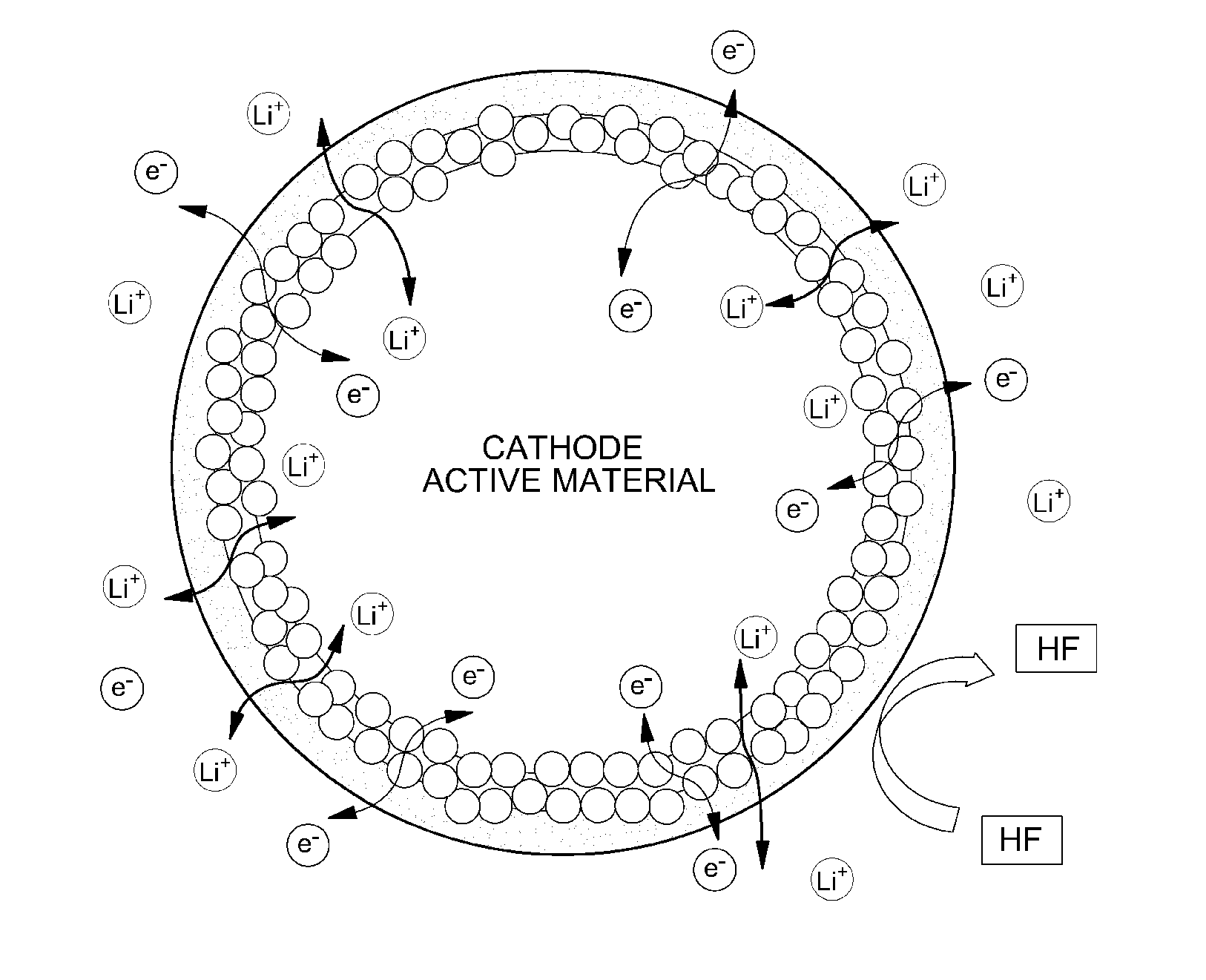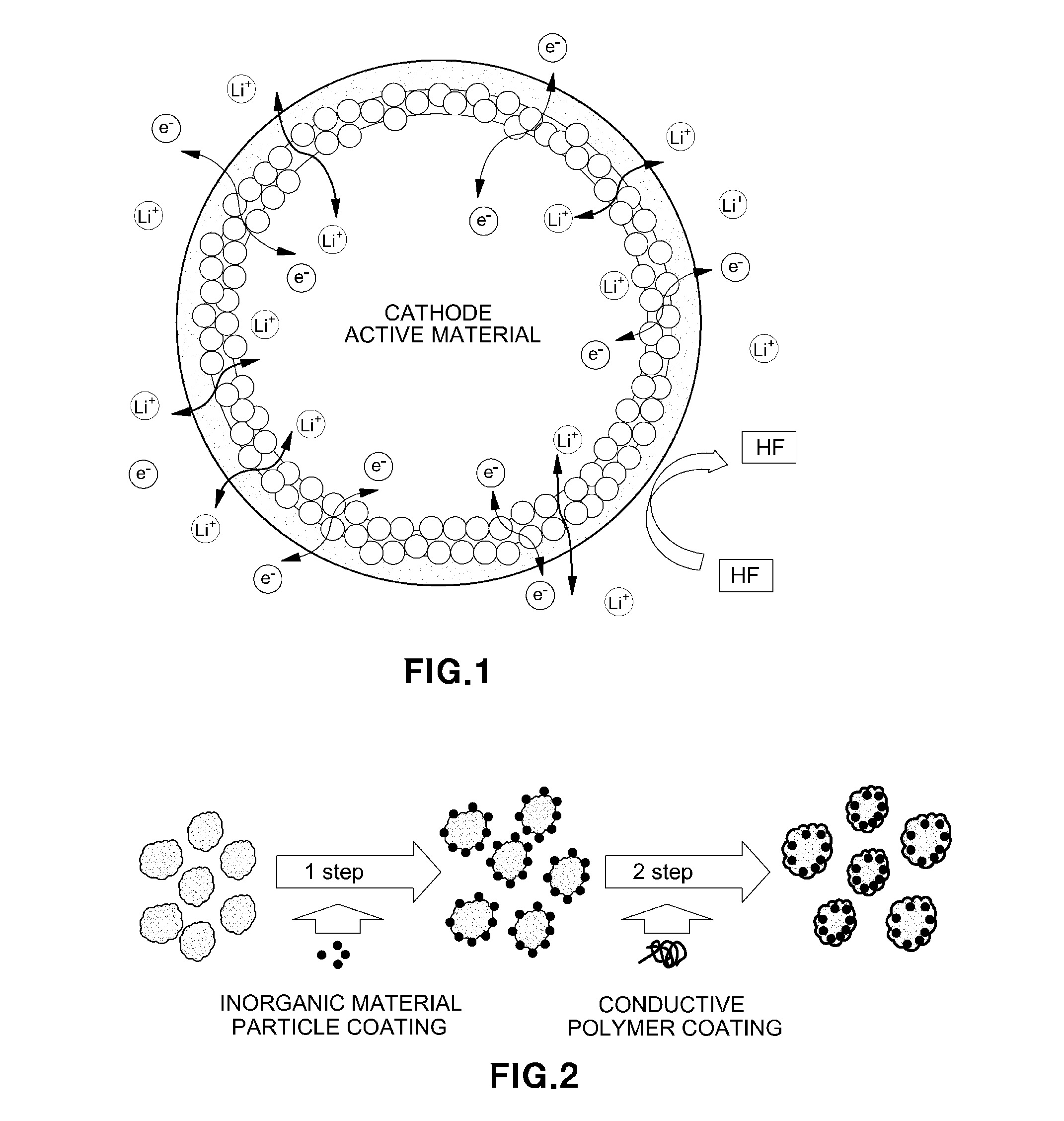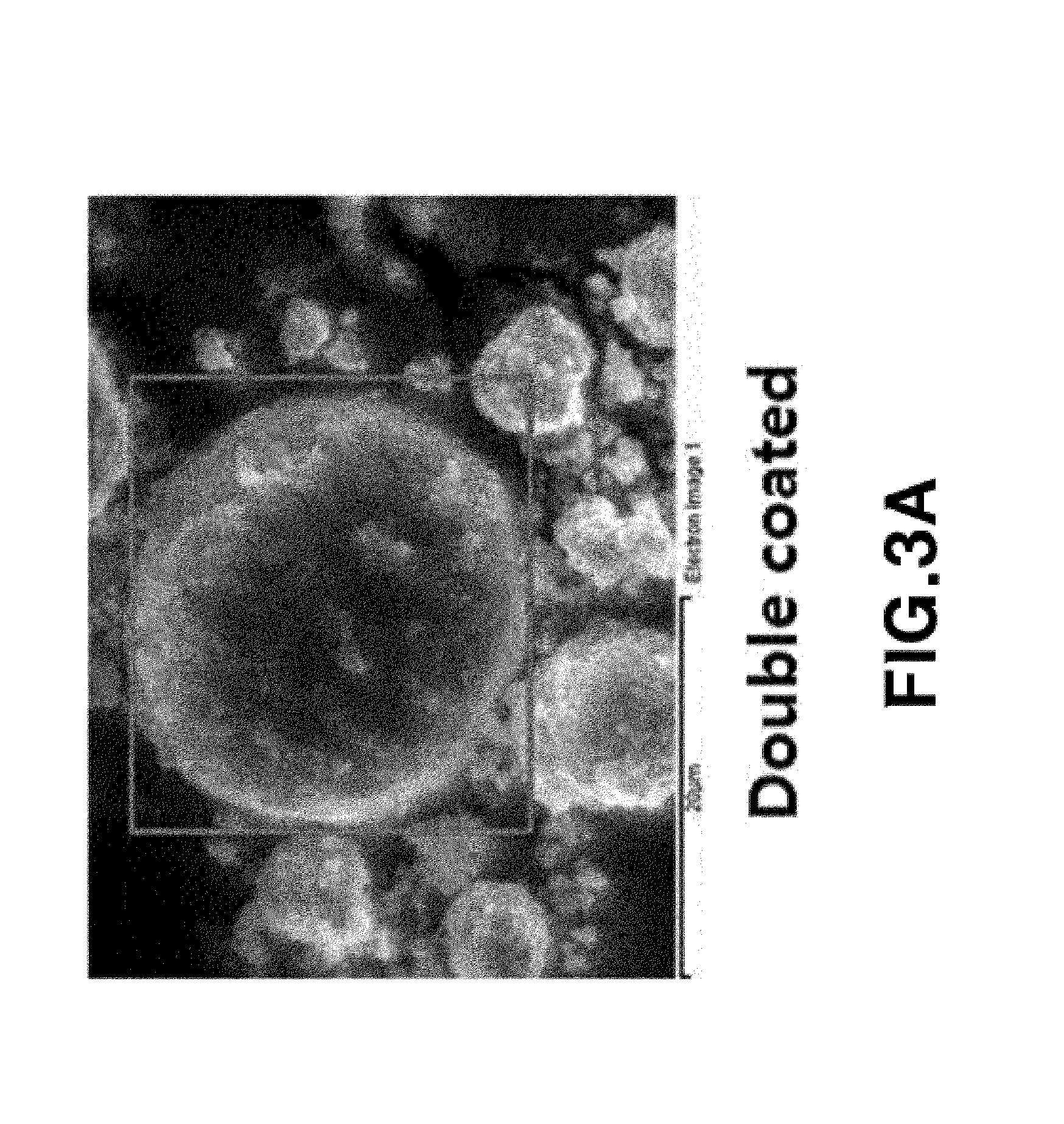Surface-treated cathode active material and lithium secondary battery using the same
a cathode active material and lithium secondary battery technology, applied in battery, cell components, electrochemical generators, etc., can solve the problems of insufficient security of cathode active material structural stability, deterioration of lithium ions and electrons, and insufficient uniformity of coating, so as to enhance high voltage and service life characteristics, structural and thermal stability, and improve output characteristics. , the effect of enhancing the movement of lithium ions and electron conductivity of the electrod
- Summary
- Abstract
- Description
- Claims
- Application Information
AI Technical Summary
Benefits of technology
Problems solved by technology
Method used
Image
Examples
example 1
Surface Treatment of Cathode Active Material
[0068]A schematic surface coating process of an active material is illustrated in FIG. 2. Coating was performed as illustrated in FIG. 2. A cathode active material may be applied to all metal oxide materials, and was applied to the Li[Ni0.6Co0.2Mn0.2]O2 (hereinafter, NMC 622) material in the present Example. A dry coating was performed on the NMC 622 surface using aluminum oxide (Al2O3, Aldrich) having a size of 2 to 9 nm, and herein, an amount of 0.5 wt % was coated. For the dry coating, a ball-milling method known in the art was used, and dry coating was performed at a speed of 300 rpm for 6 hours.
[0069]The cathode active material subjected to dry coating was introduced into a nitromethane solution in which a PEDOT-PEG polymer was dissolved, and the resulting solution was stirred at temperature of 60° C. for 6 hours. After stirring, a solid was obtained through a filtering process, and the double coating on the surface of the cathode act...
example 2
Morphology Analysis of Cathode Active Material
[0070]Morphology of the cathode active material subjected to coating was confirmed. In order to confirm the degree of dispersion of the coating material on the surface of the electrode subjected to coating, mapping results of various elements were analyzed using a scanning electron microscope and illustrated in FIGS. 3(a)-3(d).
[0071]As a result of comparison with the cathode active material (pristine positive electrode) which was not coated, aluminum (Al) and sulfur (S) contained in the inorganic material and the conductive polymer were detected in the case of the double coated cathode active material, and it could be seen that these elements were uniformly coated on the surface of the active material. The photographs observed using TEM in FIGS. 4(a)-4(d) each shows (a) the surface of the active material before coating, (b) the surface of the active material after coating with the electron and ion conductive polymer, (c) the surface of t...
example 3
Manufacture of Electrode and Cell Using the Coated Cathode Active Material
[0072]After poly (vinylidene fluoride) (PVdF), used as a binder in order to manufacture a positive electrode; was completely dissolved in N-methylpyrrolidone, super-P carbon, as a conductive material; and double-coated LiNi0.6Co0.2Mn0.2O2 were measured and put into the resulting mixture solution, and the resulting mixture was stirred. In this case, a weight ratio of the cathode active material, the conductive material, and the binder was set to 85:7.5:7.5.
[0073]The completely mixed slurry solution was applied on an aluminum foil, dried, and was subjected to a lamination process using a roll press. This was performed in order to enhance a mutual bonding force of the active material / the conductive material / the binder and effectively bind the materials to the current collector.
[0074]When the compression process was finished, an electrode having a suitable size was manufactured through a cutting process, and dried...
PUM
| Property | Measurement | Unit |
|---|---|---|
| particle diameter | aaaaa | aaaaa |
| thickness | aaaaa | aaaaa |
| charging voltage | aaaaa | aaaaa |
Abstract
Description
Claims
Application Information
 Login to View More
Login to View More - R&D
- Intellectual Property
- Life Sciences
- Materials
- Tech Scout
- Unparalleled Data Quality
- Higher Quality Content
- 60% Fewer Hallucinations
Browse by: Latest US Patents, China's latest patents, Technical Efficacy Thesaurus, Application Domain, Technology Topic, Popular Technical Reports.
© 2025 PatSnap. All rights reserved.Legal|Privacy policy|Modern Slavery Act Transparency Statement|Sitemap|About US| Contact US: help@patsnap.com



